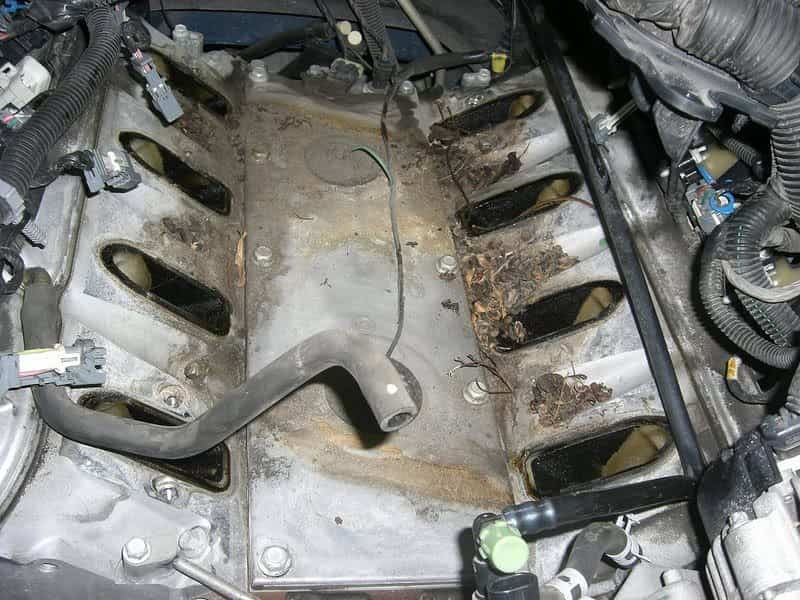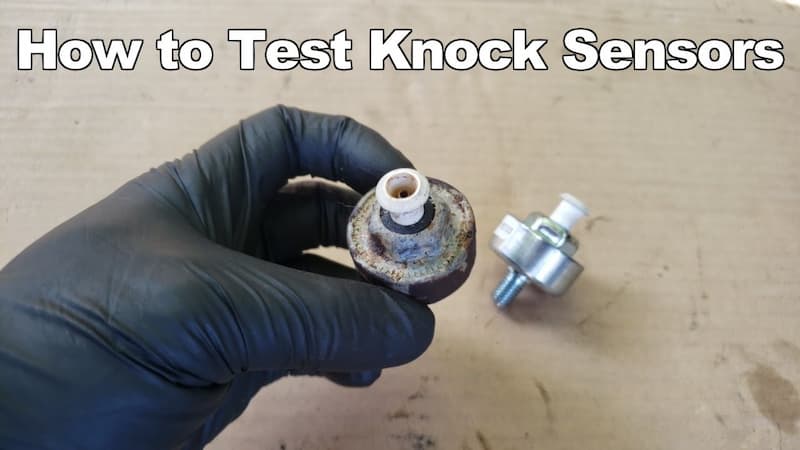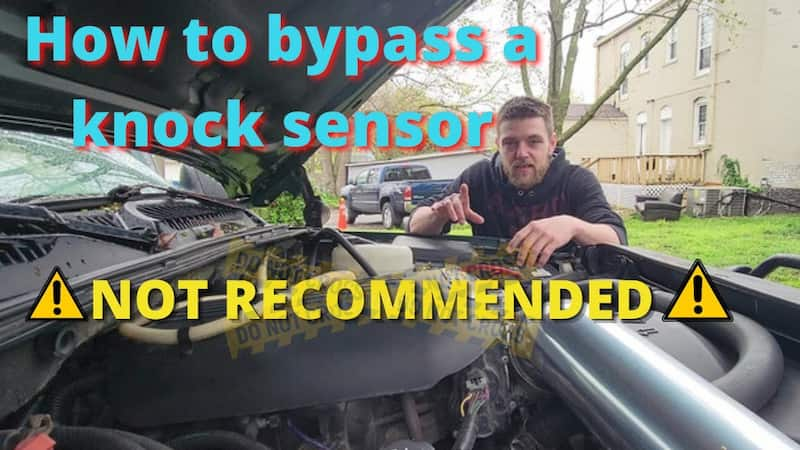Chevrolet is a famous car brand with impressive designs and excellent construction. But sometimes you will need some help with its system.
And knock sensor is a part worth your attention. It is one of the Chevy knock sensor locations most prone to failure on Chevy models.
And the basic instructions on the Chevy knock sensor bypass below will be able to help you in many different situations.

What Is A Chevy Knock Sensor Bypass?
The Knock sensor is a small electronic part but plays a significant role in starting and operating the vehicle.
With this sensor, it would be easier for the system to control the operation of the fuel injectors. If this happens, your vehicle will run less efficiently and consume more gas or oil.
Like all other sensors, this device has a rather complex structure with piezoelectric ceramics and many microchips.
In most SUVs or sports cars, you’ll usually find a knock sensor on the intake manifold of an internal combustion engine. Thanks to the characteristic round shape, it is not difficult to recognize this part. From there, it is easy to manipulate or replace when needed.
Because it is an electronic device, we can connect devices and fine-tune the knock sensor as needed. Even in many cases, resetting the part to the factory state is the fastest and most appropriate measure.
What Does Knock Sensor Do?
The device itself is part of the car’s ignition system. So its task will be related to starting and operating the engine.
A knock sensor is a sound sensor that can listen to and distinguish minor sounds from the combustion chamber or engine.
Vibrations or any action that makes this sensor will record a sound. The knock sensor converts it into an electronic signal for each type of sound.
Finally, all the information will return to the engine control unit (ECU) for this system to analyze and give appropriate treatment methods for each moment.
If this part recognizes any strange sounds, the ECU will base it on adjusting the ignition timing or cycle accordingly.
On the other hand, Chevy knock sensor problems may mislead the controller.
When Do You Need To Bypass It?
The only case we need to bypass is when there are signs that the knock sensor has a problem or you already know this part’s condition.
Stopping all activities and ignoring the sensor is how we can start or operate the car stably. As mentioned above, the ECU will receive false information if this critical part is not working correctly.
Since then, all other mechanisms, including the intake opening, will also behave significantly more abnormally. You will even face many dangers, such as the car stopping in the middle of the road.
These errors often happen on 4.3 engines, and you need to do Chevy 5.3 knock sensor bypass to prevent the vehicle from falling into instability. Therefore, we must bypass this to avoid falling into such dangerous situations.
The Common Bad Knock Sensor Signs
Recognizing the lousy knock sensor on Chevy models takes work.
They will only happen on a small scale and are difficult to identify quickly, like many other problems. However, you can refer to some of the situations below to identify problems with the knock sensor.
Illuminated Check Engine Light
The fastest and easiest way to identify a bad knock sensor is to look at the check engine light on the control panel.
Vehicles will always have mechanisms that control every component’s operation, and ignition system sensors are no exception. Thus, your car will quickly send notifications by lighting up.
The check engine light also represents many other problems. However, we should still prioritize knock sensor testing.
Pinging Noise From the Engine
The sensor used to manage knocks also has another use: suppress these annoying sounds through the ECU.
If you still hear knocks, the knock sensor is probably not working correctly. No matter where it comes from, we can’t stop this noise because the critical part used for control is no longer functioning.
Poor Engine Performance
Wrong ignition timing or erratic performance tuning are problems that bad knock sensors cause. And the most obvious consequence of this phenomenon lies in the severely reduced performance of the Chevy models. You should not ignore a sensor problem if you detect an abnormality in the vehicle’s performance.

How to Test a Knock Sensor?
Each car model will have its test method, but I still want to share the essential steps with you. Always remember to check the manufacturer’s documentation before deciding to operate.
Step 1: Review the error code
To perform this step, you will need diagnostic tools (OBD) to determine what error code the vehicle is experiencing. Buy a suitable kit, then connect and run special software to look into problems.
When the results are available, you can search the documentation or the internet to ensure it is in the knock sensor. But remember that this is not the only step; identification makes it easier to know the right course of action.
Step 2: Check directly
The next step is to conduct a direct test with the system’s internal mechanisms. It will help you know if there is a problem with your vehicle’s wiring or support mechanisms. Because the knock sensor is inherently electronic, it is natural to depend on wires.

How To Bypass Knock Sensor?
You should carefully refer to the instructions below to perform a bypass bad knock sensor. We can bring the vehicle to the garage for better support. And if you decide to do it at home, you need to follow the steps that I am about to list strictly
Step 1
Do not rush to manipulate; prepare tools in advance and list equipment to use when performing bypass. I will suggest you some items to have when performing this action.
- Screwdrivers
- Wire strippers, wire cutters, and replacement conductors
- Electrical tape
- Knock sensor new if you want to try a replacement
- Measuring devices such as transducers or dynamometers
Step 2
First, you need to open the hood by pulling the dedicated latch at the nose of the vehicle. Then find the negative cable holder, place the socket set, and rotate it to the left counterclockwise.
Step 3
Once you have removed the hood, you need to look at the front of the engine assembly to determine where the knock sensor is. You may need to disassemble some other parts to access the sensor during this process.
Step 4
Once you have found this device, you need to pay attention to the plug below to connect the part to the electrical system. Be sure to remove all power supply mechanisms and take protective measures before removing the power cable.
Step 5
Use a screwdriver to remove the screws and pins securing the sensor. You can then install a new part for Chevy knock sensor replacement. Finally, put the parts back together and close the lid.
FAQs
What happens if the knock sensor is not connected?
An annoying engine noise, an unstable vehicle, or significant fuel consumption are possible problems if the sensor is not connected. In addition, it is not excluded that the engine fails without our knowledge.
Are knock sensors necessary?
Knock sensors are an essential mechanism when helping the car recognize problems at the start-up stage and then make changes to suit the effects of the surrounding environment.
How much voltage does a knock sensor produce?
Sensors, in general, and knock sensors, in particular, consume less power because of their small size and some unique features. The maximum power level that this part needs to operate is usually only 4.5 volts.
Can a knock sensor reduce engine power?
The answer is yes, but only if this part has problems and disrupts the vehicle’s operation.
Conclusion
And above is all the information I want to share with you about the Chevy knock sensor bypass.
This process is relatively easy, but deciding when to bypass and identify errors is much more complicated.
Therefore, you should consider each item carefully instead of just stopping at the steps. Only then will we have enough knowledge to ensure that the manipulation does not go wrong.
